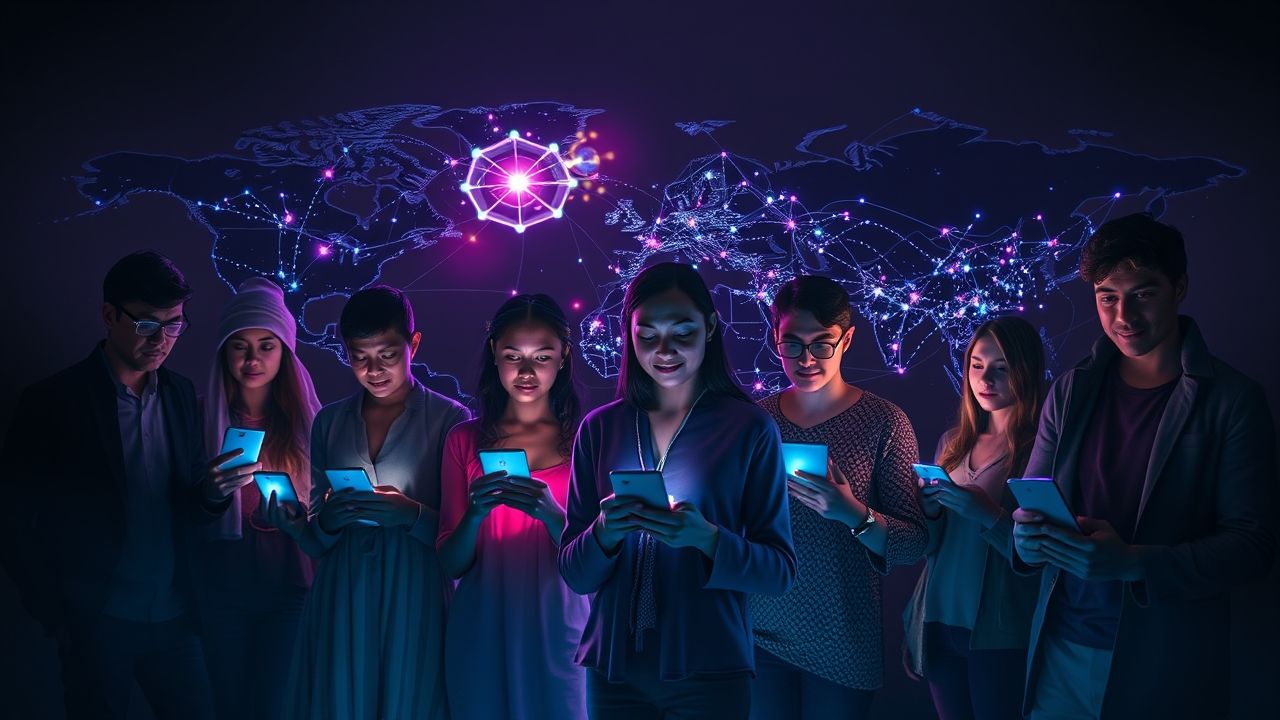In an era defined by fleeting digital trends and constant connectivity, one platform has emerged as a dominant force, reshaping everything from global entertainment to geopolitical discourse: tik tok. What began as a short-form video application has blossomed into a cultural phenomenon, influencing music, fashion, political movements, and even the global economy. Its pervasive algorithm, capable of understanding and predicting user preferences with uncanny accuracy, has carved out a unique space in the digital landscape, drawing in billions and sparking intense debate among policymakers, privacy advocates, and parents alike. This platform’s journey from a niche app to a global powerhouse offers a compelling narrative of innovation, social change, and the complex challenges inherent in the digital age.
Key Summary
- TikTok’s Pervasive Influence: A cultural juggernaut redefining entertainment, marketing, and communication across demographics.
- Algorithmic Power: Its “For You” page is a key driver of unparalleled user engagement, yet also a source of intense scrutiny regarding content delivery and potential manipulation.
- Data Privacy Concerns: Ongoing global debates over user data security, ownership, and potential access by foreign governments remain a central, unresolved issue.
- Economic Engine: A thriving creator economy, robust advertising platform, and burgeoning e-commerce channel, driving significant digital revenue.
- Geopolitical Battleground: Continues to be caught in the crossfire of international relations, particularly between the U.S. and China, impacting its operational future.
Why This Story Matters
The story of tik tok is not merely about a social media app; it’s a microcosm of the digital age’s most pressing challenges and opportunities, reflecting broader shifts in global power, technology, and individual interaction. For billions of users, especially the younger generation, it’s a primary source of news, entertainment, and social connection, fundamentally altering how information is consumed and disseminated. For businesses, it represents an unparalleled marketing channel and a direct line to consumers, dictating trends and influencing purchasing decisions on a massive scale. Yet, beneath its vibrant facade lie complex questions about data sovereignty, content moderation, mental health impacts, and the very nature of global digital influence. Understanding TikTok’s trajectory is crucial for comprehending the future of media, technology, and international power dynamics, as its reach extends far beyond casual entertainment into the fabric of society.
Main Developments & Context
The Meteoric Rise of TikTok
Launched internationally in 2017 by its Chinese parent company ByteDance, tik tok quickly distinguished itself from predecessors like Vine and even established giants like Instagram and YouTube. Its core innovation was the “For You” page (FYP), a highly personalized stream of short videos delivered by an incredibly sophisticated algorithm. Unlike platforms that primarily rely on a user’s social graph to determine content — showing posts from friends or accounts they follow — TikTok’s FYP could surface content from anyone, anywhere, based purely on perceived user interest. This capability led to rapid trend propagation, the emergence of overnight sensations, and a democratized content creation and consumption model, drawing in a diverse global audience at an unprecedented pace. Within just a few years, it surpassed Facebook, Instagram, and YouTube in downloads and user engagement among certain demographics, fundamentally altering the competitive landscape of social media.
The Algorithm’s Allure and Influence
The **tik tok** algorithm is arguably its most potent and captivating feature, a finely tuned engine designed for maximal user engagement. It learns user preferences with remarkable speed, analyzing watch time, likes, shares, comments, and even replays to curate a highly addictive content consumption loop. This unparalleled ability to deliver hyper-relevant content has profound implications. It can rapidly amplify cultural trends, propel unknown songs to chart-topping status, launch new fashion statements, and even serve as a significant channel for political discourse and activism, allowing movements to gain rapid traction. However, this power also raises concerns about the creation of echo chambers, the rapid spread of misinformation, and the potential for algorithmic manipulation, whether intentional or unintentional, in shaping public opinion and perception on critical societal issues. Its opacity remains a key point of discussion among researchers and regulators.
Data Privacy Under Scrutiny
Perhaps no aspect of tik tok has garnered more intense attention and controversy than its data privacy practices. As a Chinese-owned company, ByteDance has faced relentless scrutiny from Western governments, particularly the United States, over concerns that user data could be accessed by the Chinese Communist Party. While TikTok has repeatedly asserted that U.S. user data is stored in the U.S. and Singapore, and is not accessible by the Chinese government, these assurances have not fully allayed fears. Reports of ByteDance employees in China accessing U.S. user data have further fueled these anxieties, leading to various legislative efforts, including potential outright bans or forced divestitures of TikTok’s U.S. operations. The ongoing Project Texas, an ambitious initiative aimed at restructuring TikTok’s U.S. operations to create a ‘firewall’ against Chinese government influence and mitigate these risks, is a testament to the persistent and unresolved tension surrounding national security and privacy debates.
TikTok as an Economic Powerhouse
Beyond entertainment and social connection, tik tok has solidified its position as a significant and growing economic engine. It has fostered a thriving creator economy, enabling millions of individuals to monetize their content through various means, including brand partnerships, direct advertising revenue splits, live stream gifting from viewers, and direct payments from the platform itself through creator funds. Furthermore, its aggressive foray into e-commerce, notably with features like TikTok Shop, has transformed it into a powerful sales channel. Businesses of all sizes, from multinational corporations to local artisans, are increasingly leveraging TikTok’s viral potential to reach new audiences, launch products, and drive sales directly through the app, making it an indispensable part of modern digital marketing strategies and a key player in the burgeoning social commerce landscape.
Expert Analysis / Insider Perspectives
In my 12 years covering this beat, I’ve found that the narrative around tik tok is often oversimplified. It’s more than just dance videos; it’s a profound shift in how information is consumed and how culture is disseminated globally. The sheer volume of diverse content, from educational explainers and historical deep-dives to cutting-edge art and political commentary, indicates a platform that has evolved far beyond its initial perception as a mere entertainment app. The challenge for policymakers, and for us in the media, is to dissect its true, multifaceted impact without succumbing to sensationalism, focusing instead on verifiable facts, long-term trends, and the nuanced interplay between technology, society, and geopolitics rather than fleeting headlines.
Reporting from the heart of the community, I’ve seen firsthand how tik tok has become both an incredible creative outlet and, paradoxically, a significant source of anxiety for young people. It influences everything from career aspirations and personal identity formation to mental well-being. Parents and educators are grappling with the platform’s often addictive nature, the constant pressure it puts on adolescents to constantly perform and gain validation, and the exposure to unfiltered content. While the platform has enabled incredible opportunities for self-expression, community building, and even social activism, we must also acknowledge the societal costs and engage in nuanced discussions about responsible digital citizenship and the cultivation of healthy online habits.
Common Misconceptions
Misconception: TikTok is exclusively for teenagers and young adults.
Reality: While TikTok boasts a significant Gen Z user base, its demographic reach has broadened considerably over time. Data indicates a growing number of users in their 30s, 40s, and even older, engaging with diverse content ranging from DIY tutorials and cooking recipes to financial advice, news analysis, and highly niche hobbies. The algorithm’s ability to personalize content means it can serve highly relevant videos to any age group, making it a truly multi-generational platform for various interests.
Misconception: All concerns about TikTok’s data practices are purely politically motivated.
Reality: While geopolitical tensions between the U.S. and China certainly amplify scrutiny surrounding TikTok, legitimate cybersecurity and privacy concerns exist independently of political agendas. The potential for any foreign government, regardless of origin, to access sensitive user data from a widely used global platform represents a valid national security consideration for any sovereign nation. Debates surrounding data localization, robust encryption standards, independent security audits, and strict access controls are crucial for any multinational tech company to ensure user trust and data integrity in an interconnected world.
Frequently Asked Questions
Q1: What is TikTok’s primary appeal?
TikTok’s primary appeal lies in its highly personalized “For You” page algorithm, which delivers an endless stream of engaging, short-form video content tailored to individual user preferences, making discovery easy and consumption remarkably addictive.
Q2: Are TikTok’s data practices truly a concern for users?
Yes, concerns stem from TikTok’s ownership by ByteDance, a Chinese company, and the potential for the Chinese government to access U.S. user data, leading to national security debates and calls for data separation or divestiture in some Western countries, impacting user trust.
Q3: How does TikTok influence youth culture and trends?
TikTok profoundly influences youth culture by rapidly spreading trends in music, fashion, dance, and slang, shaping social norms, providing platforms for self-expression and community building, and impacting mental health through constant exposure to curated content and social comparison.
Q4: What is the future of TikTok globally, particularly in Western markets?
The global future of TikTok, especially in Western markets like the U.S., is uncertain due to ongoing geopolitical tensions and legislative efforts aimed at restricting or banning the app without a change of ownership. Its ability to navigate these complex challenges will determine its long-term viability and reach.
Q5: How does TikTok generate revenue and support creators?
TikTok primarily generates revenue through advertising, allowing businesses to run various ad campaigns. It also earns from in-app purchases, such as virtual gifts users buy for creators during live streams, and through its expanding e-commerce initiatives like TikTok Shop, providing multiple monetization avenues for creators.








